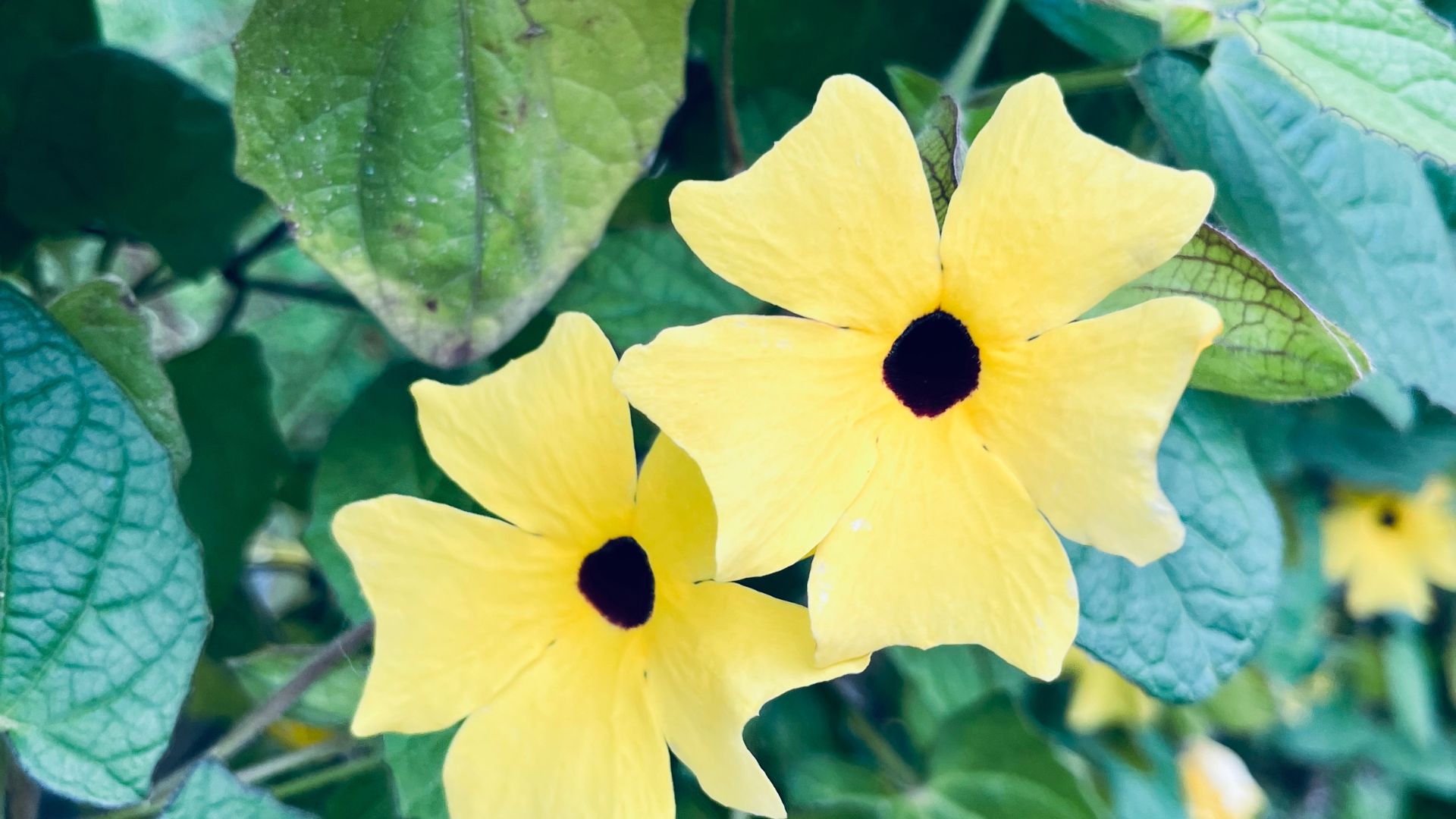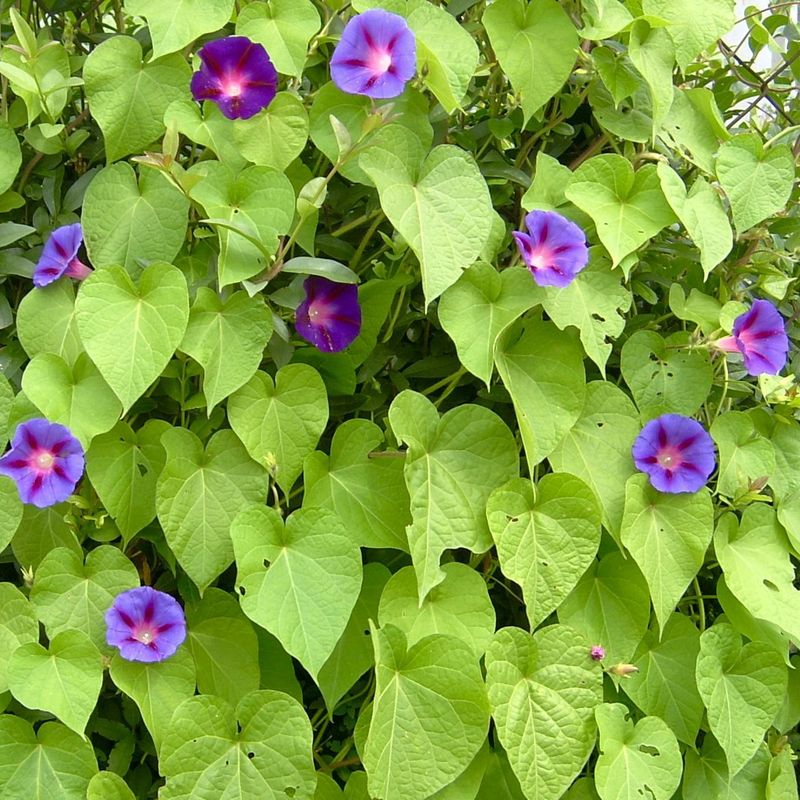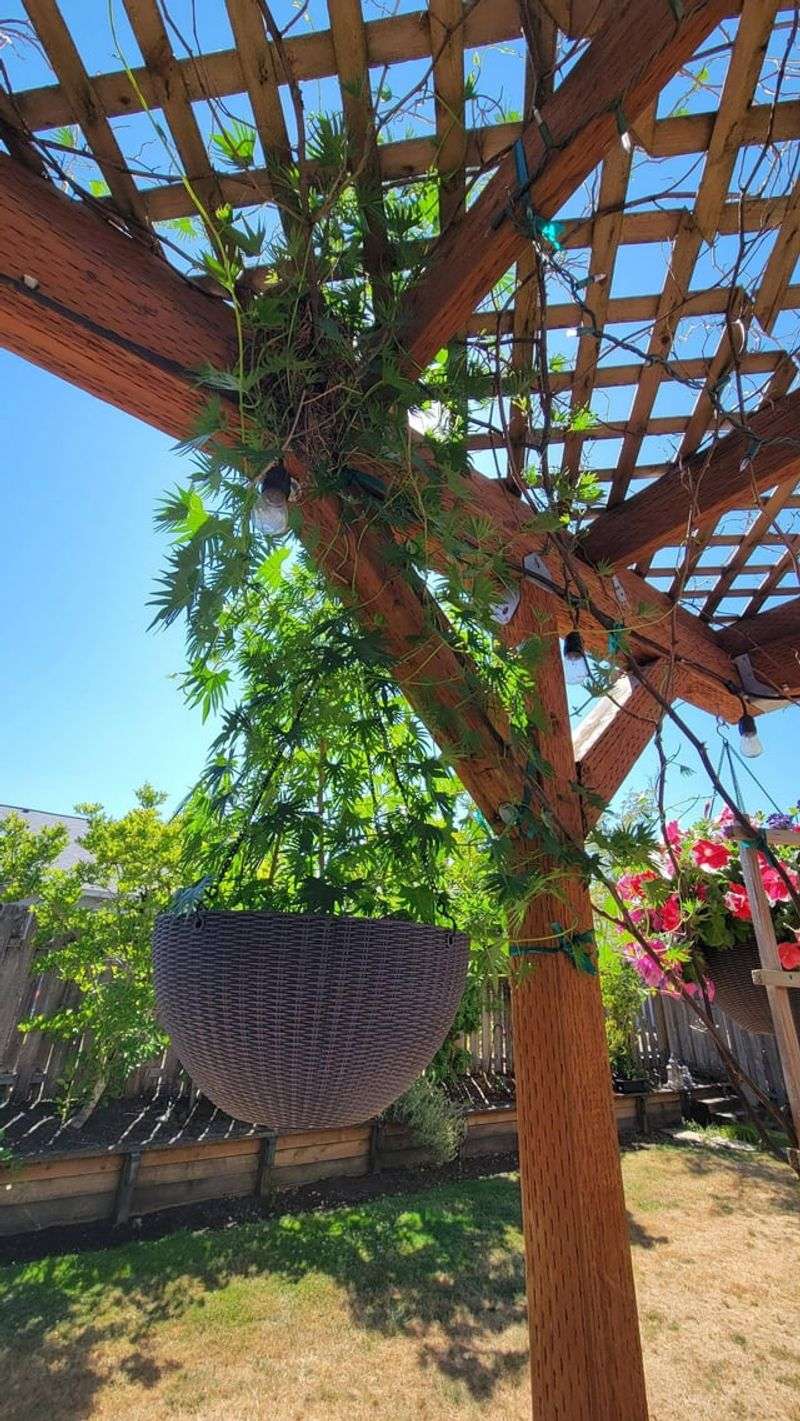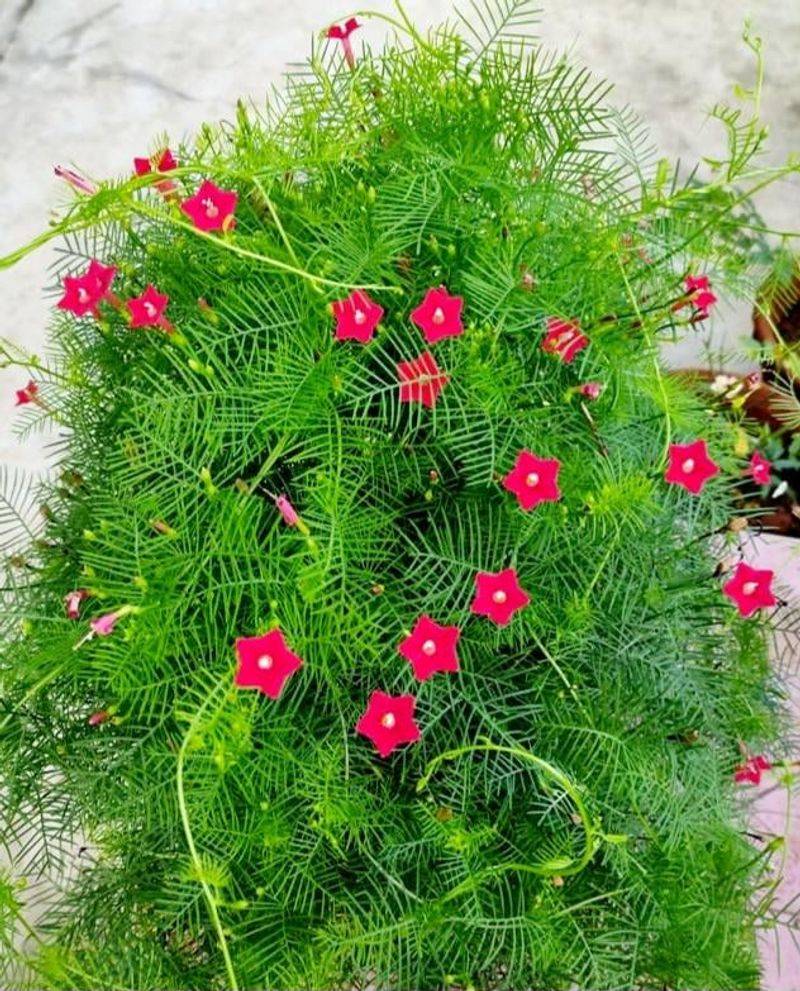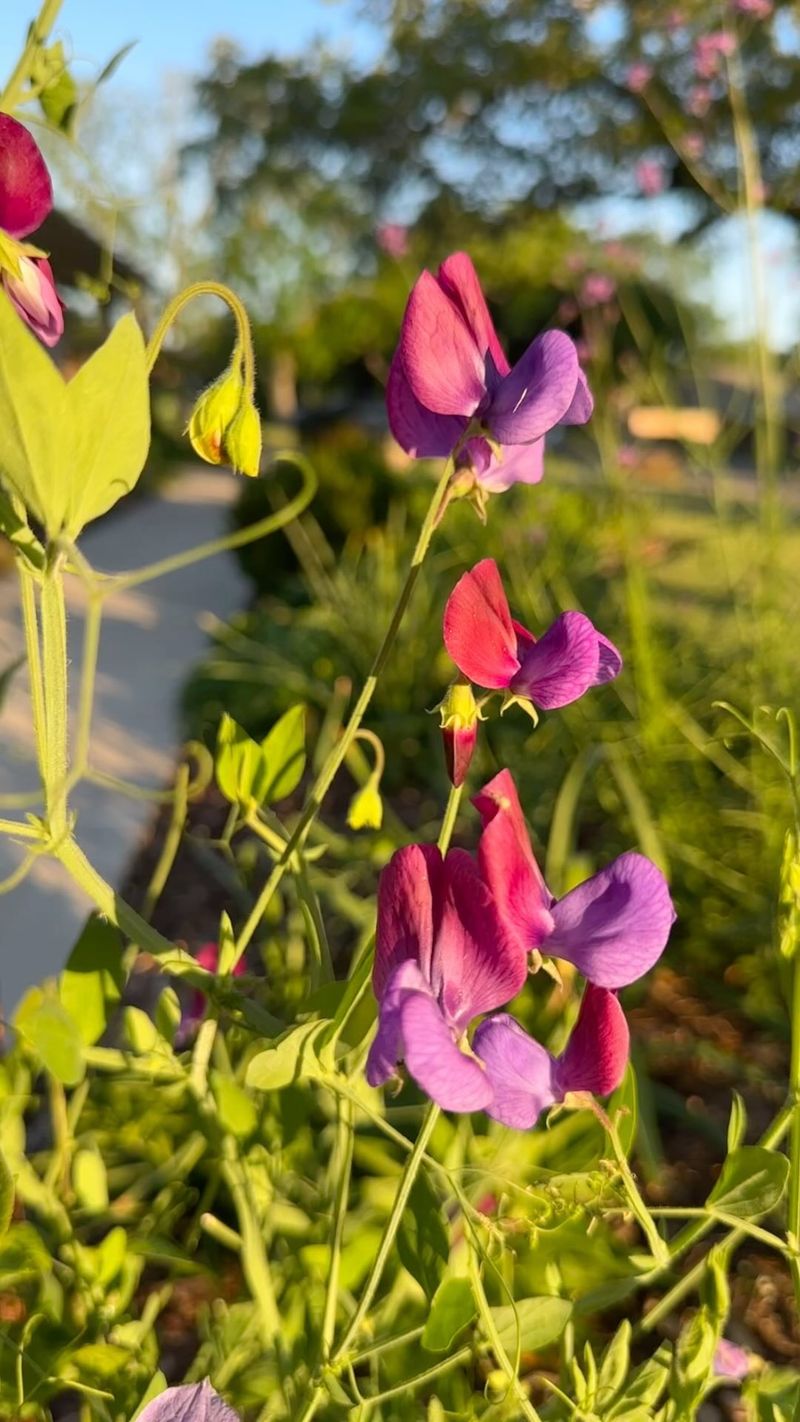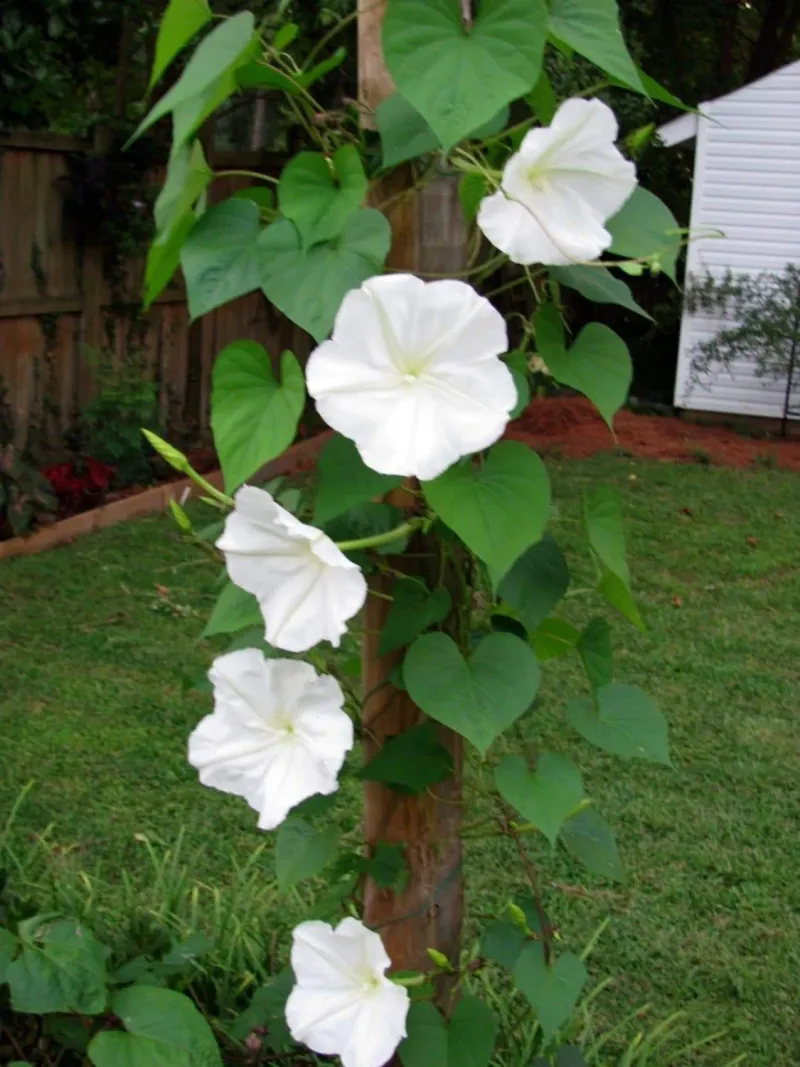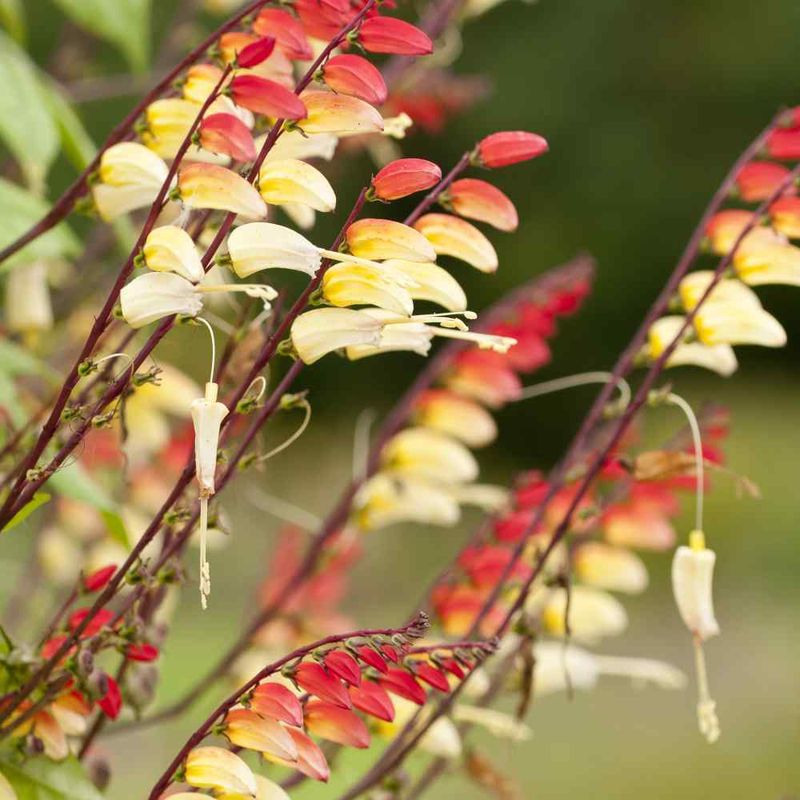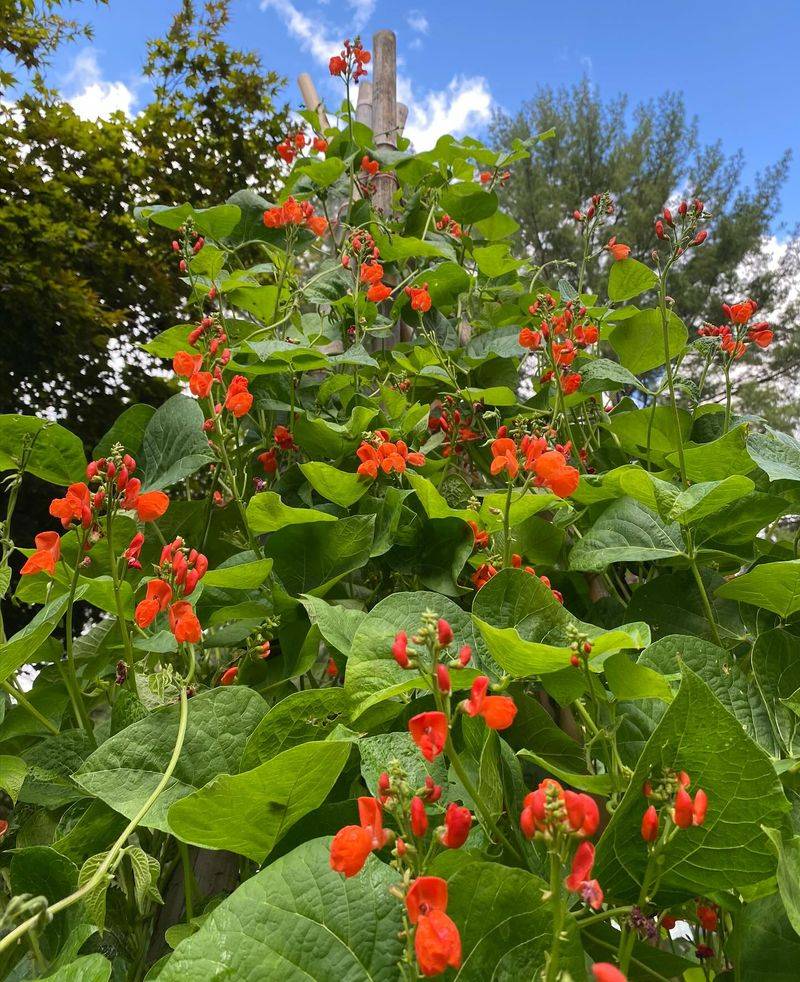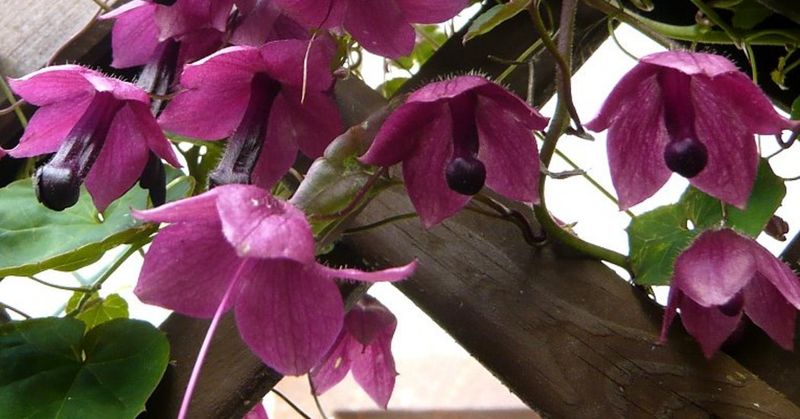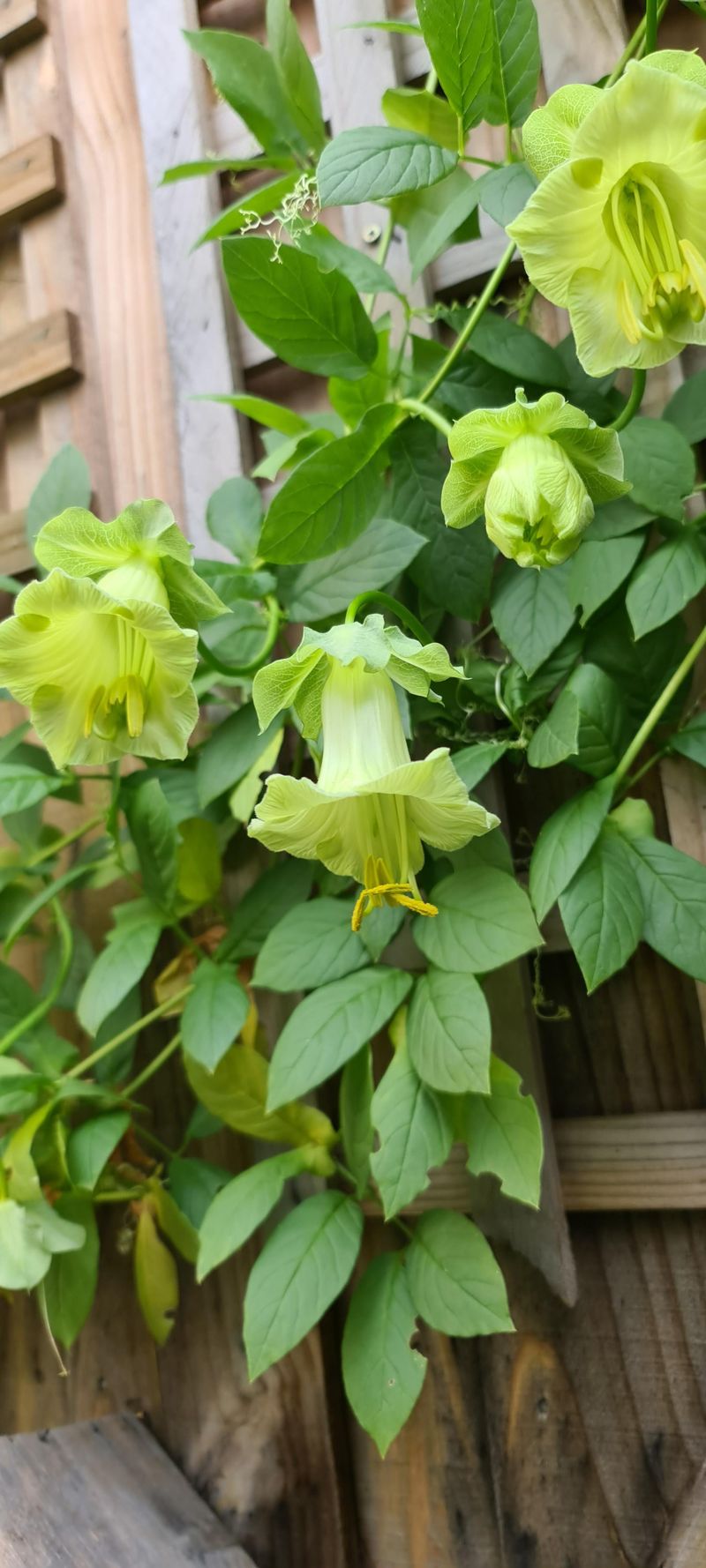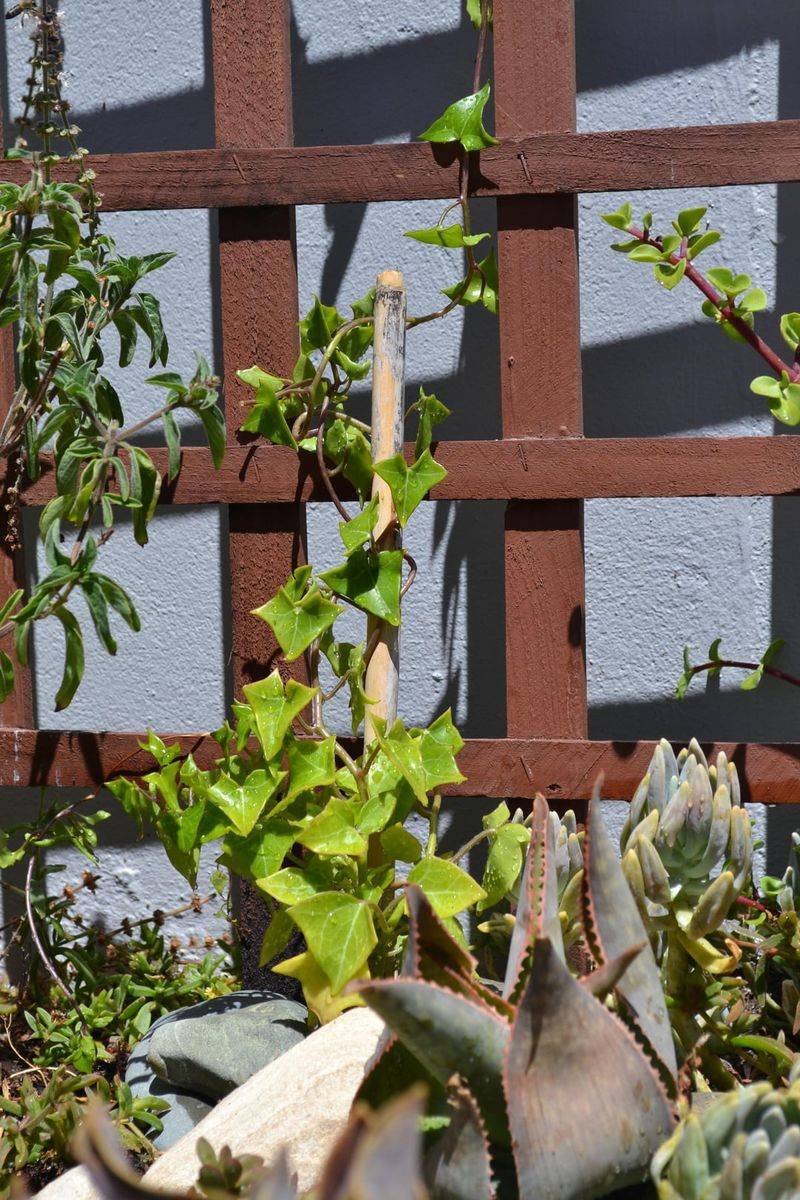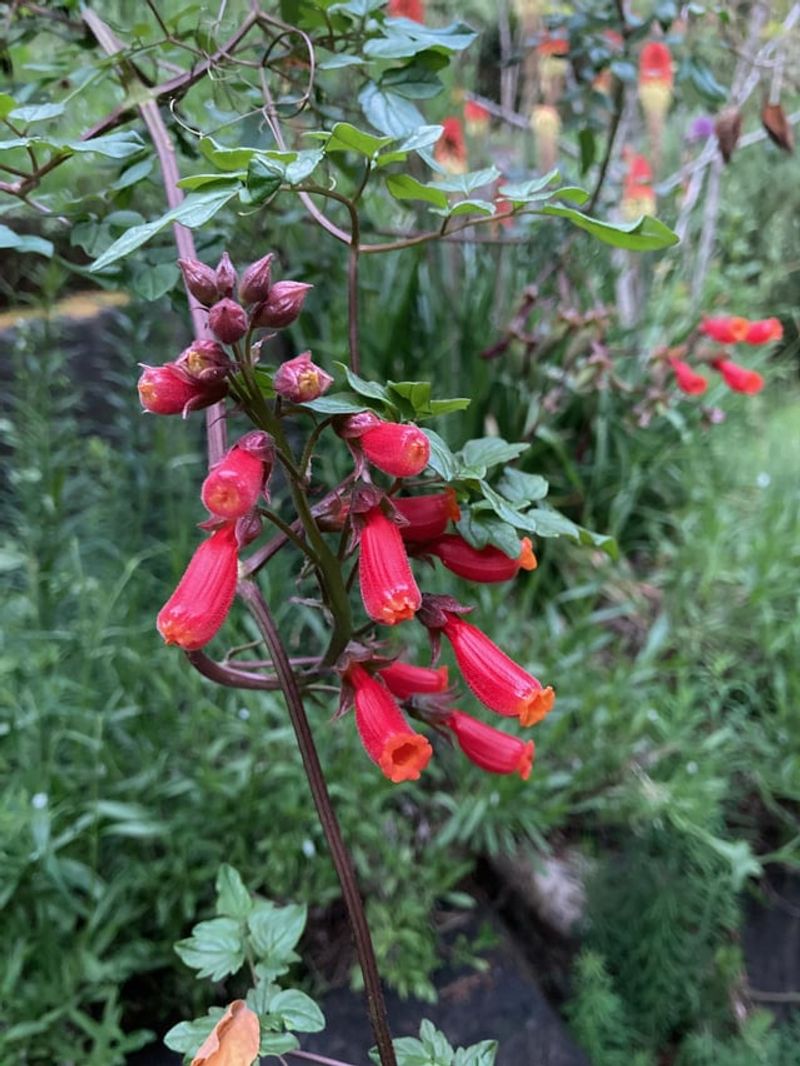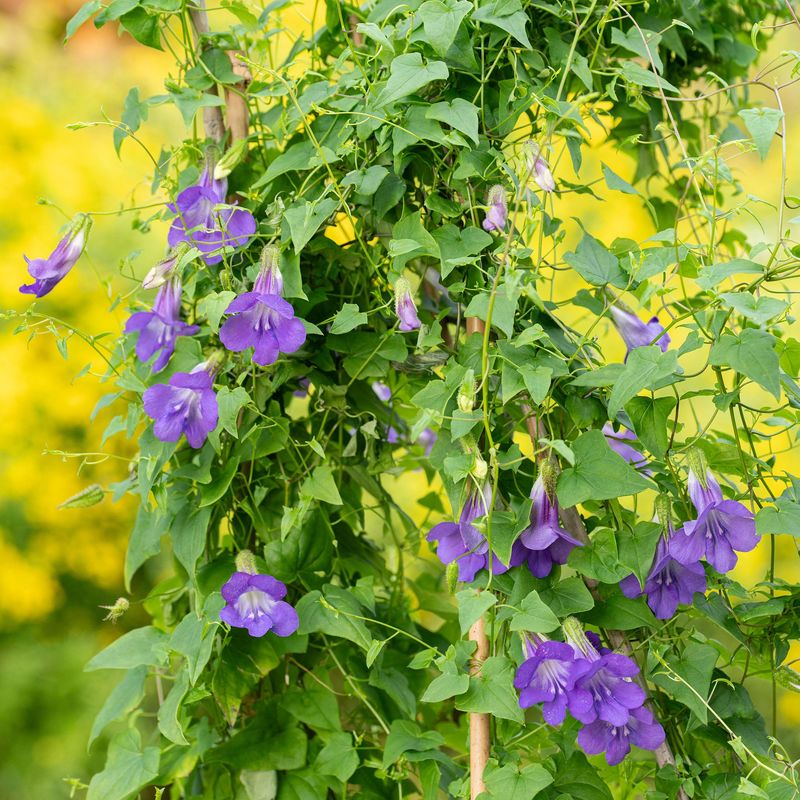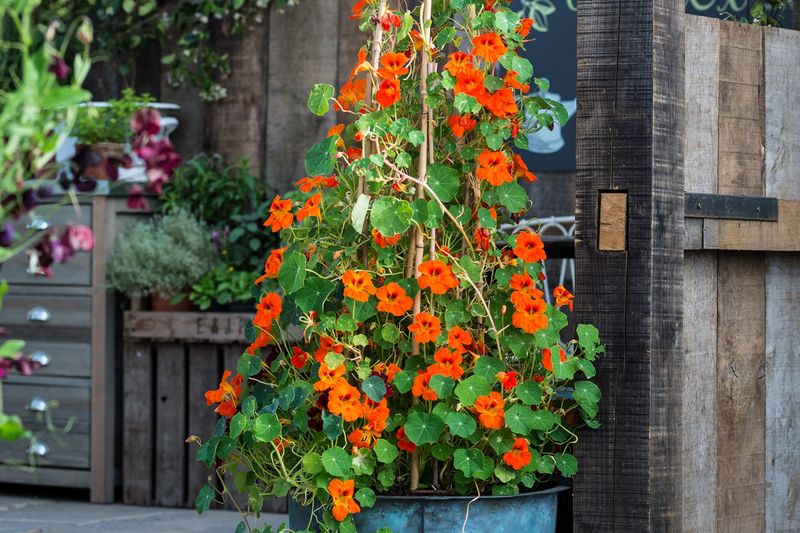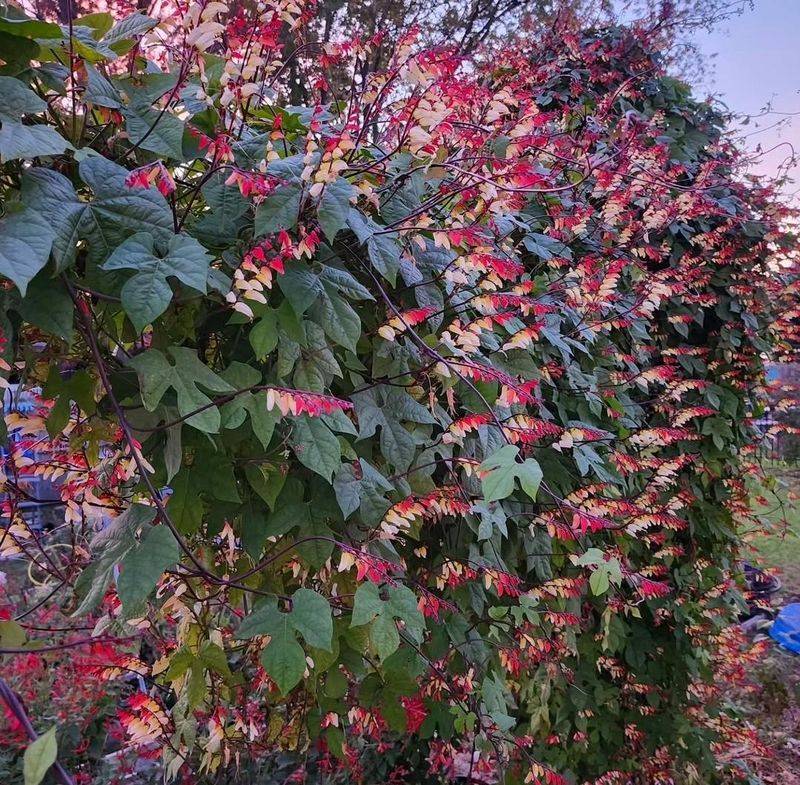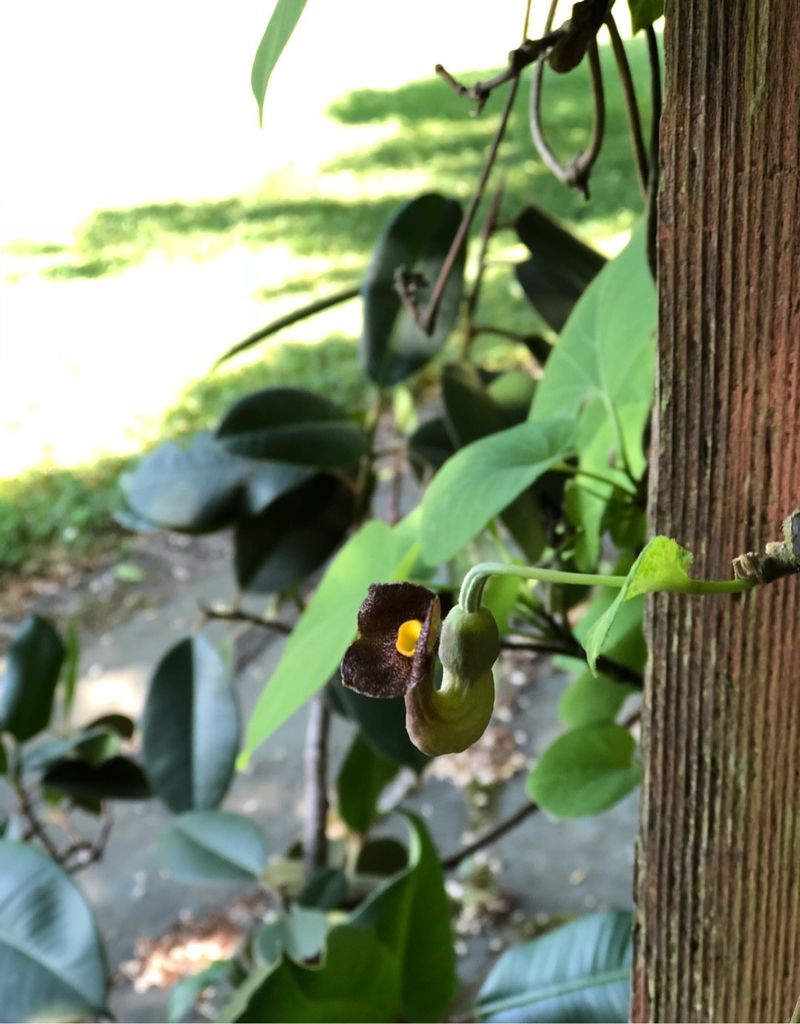Flowering vines have a magical way of turning fences, trellises, and bare walls into living works of art. I’ve always loved how they add height and softness to a garden—it feels like nature giving your space a warm hug. But not every vine lives up to the vision you have when you plant it.
Some start off strong in spring, only to fizzle out by midsummer, leaving behind more brown stems than blooms. I’ve planted a few that promised color all season but barely made it to July. It’s frustrating to watch all that potential just fade away.
If you’ve been burned by underwhelming climbers, you’re not alone. Let’s take a look at the flowering vines that often fall short—and talk about better choices that will keep the color coming right through fall.
1. Annual Morning Glory
Despite their stunning trumpet-shaped blooms, annual morning glories often fizzle out by midsummer in hot climates. The initial spring display tricks many new gardeners into thinking they’ve found a season-long solution for bare trellises.
I’ve watched countless gardeners plant these with high hopes, only to find crispy vines by August. They’re particularly sensitive to inconsistent watering, developing brown edges and eventually collapsing when soil moisture fluctuates.
Their quick decline makes them frustrating for gardeners wanting continuous color. While they self-seed readily, the replacement seedlings rarely mature before the season ends, leaving unsightly gaps in your garden design.
2. Black-Eyed Susan Vine
Marketed as an easy-growing annual, Black-Eyed Susan vine often disappoints when temperatures climb above 90 degrees. The cheerful yellow blooms that were abundant in spring suddenly become sparse as summer progresses.
Water requirements become nearly impossible to meet during heat waves. My neighbor planted these along her porch railing last year, and by July they were struggling despite her diligent care. The leaves turned pale green before developing crispy brown edges.
Few gardeners realize this vine’s sensitivity to heat stress until it’s too late. Once the decline begins, recovery is unlikely, and the plant continues its downward spiral regardless of intervention efforts.
3. Cardinal Climber
Cardinal Climbers charm gardeners with their delicate, star-shaped red flowers and finely cut foliage. Unfortunately, their beauty often peaks early then rapidly declines when nights grow cool in early fall.
The first hint of trouble comes when lower leaves begin yellowing prematurely. Having grown these twice myself, I’ve noticed they’re particularly vulnerable to powdery mildew in humid regions, which accelerates their decline and makes them look unsightly by late summer.
Many gardeners don’t realize how temperature-sensitive these vines are. When nighttime temperatures dip below 55°F, flowering stops completely, leaving you with a thinning vine that contributes little to the garden landscape.
4. Cypress Vine
Those feathery, fern-like leaves and star-shaped flowers make Cypress Vine an initial garden favorite. Yet by August, most gardeners discover its fatal flaw – extreme susceptibility to spider mites during dry spells.
Once established, these pests multiply rapidly in hot weather, leaving the once-lush vine looking sparse and unhealthy. Last summer, my cypress vine went from gorgeous to ghostly in just two weeks during a dry spell, despite regular hosing.
The thin stems provide little structural support as the season progresses. Even with perfect care, the plant naturally thins out by late summer, revealing gaps in coverage that make garden walls and trellises look abandoned rather than adorned.
5. Sweet Pea
The intoxicating fragrance of sweet peas makes their fleeting nature all the more heartbreaking. These old-fashioned favorites collapse almost instantly when temperatures climb above 85°F, regardless of care.
Their shallow roots make them particularly vulnerable to summer’s heat. After planting sweet peas for my spring garden, I watched helplessly as they withered away by early June despite morning shade and constant moisture. The plants simply refuse to tolerate warm nights.
Even heat-tolerant varieties rarely make it through a typical summer. The vines yellow from the bottom up, flowers shrink in size, and stems become increasingly brittle until the entire plant surrenders to summer’s intensity.
6. Moonflower
Moonflower’s dinner-plate-sized white blooms open dramatically at dusk, creating a sense of garden magic. Sadly, this nocturnal beauty often succumbs to fungal issues before summer’s end, especially in humid climates.
The thick leaves become targets for leaf spot diseases that spread rapidly during rainy periods. My moonflowers looked spectacular for about six weeks last summer before developing unsightly black spots that eventually consumed entire leaves.
Their susceptibility to root rot compounds the problem. Even with well-draining soil, extended rainy periods can cause the entire plant to collapse suddenly. By late summer, what started as a robust vine often becomes a patchy collection of struggling stems with few flowers.
7. Spanish Flag
Spanish Flag (Mina lobata) seduces gardeners with its unique gradient flowers that transition from red to yellow. Unfortunately, it’s painfully slow to establish and often doesn’t hit its stride until just before frost.
The vine requires such a long growing season that most northern gardeners never see its full potential. I started mine indoors eight weeks early last year, yet it barely began flowering in September before cold temperatures shut it down completely.
Aphids seem magnetically attracted to its tender growing tips, stunting development further. The plants also struggle with inconsistent moisture, developing yellow leaves that drop prematurely. By season’s end, most gardeners have only glimpsed a fraction of what catalog photos promised.
8. Scarlet Runner Bean
This one starts the season vigorously, producing bright red flowers that attract hummingbirds. The downfall comes during heat waves when flowering stops completely, leaving you with a green but bloomless vine for weeks.
Heat-induced dormancy frustrates gardeners expecting continuous color. When I grew these along my fence, they looked spectacular until mid-July when a two-week hot spell turned them into green wall-hangings with no visual interest. Even after temperatures moderated, flowering remained sparse.
Bean leaf beetles often discover these vines by midsummer, chewing unsightly holes in the foliage. Combined with heat stress, these pests can transform a once-promising vine into a ragged specimen that provides neither beauty nor a reliable bean harvest.
9. Purple Bell Vine
Purple Bell Vine (Rhodochiton) captivates with its dangling purple flowers against heart-shaped leaves. The trouble begins when summer humidity spikes, triggering powdery mildew that rapidly engulfs the plant.
Leaf quality deteriorates quickly once mildew takes hold. My purple bell vine looked magazine-worthy in June but developed a ghostly white coating by August that no treatment could fully eliminate. The flowers continued, but against diseased foliage, they lost much of their charm.
This vine’s brittle stems snap easily during summer storms, creating awkward gaps in coverage. The combination of disease susceptibility and fragile structure means most purple bell vines look decidedly shabby by season’s end, nowhere near the elegant specimens shown in garden catalogs.
10. Cup And Saucer Vine
Cup and Saucer Vine (Cobaea scandens) grows impressively fast, but its Achilles’ heel is extreme sensitivity to transplanting. The slightest root disturbance often leads to transplant shock from which the plant never fully recovers.
Getting these vines established requires perfect timing and conditions. I’ve tried growing them three different ways, and each time they sulked for weeks after planting, putting on little growth until late summer when it was almost too late to enjoy them.
Their massive size makes them vulnerable to wind damage just as they begin flowering. A promising specimen can be reduced to a tangled mess after one strong storm. By the time they recover and resume flowering, frost is often just around the corner.
11. Canary Creeper
Canary Creeper’s delicate yellow bird-shaped flowers and finely cut leaves make it a spring favorite. However, its performance plummets when temperatures rise above 80°F for extended periods.
Heat stress causes the vine to literally stop in its tracks. My canary creeper looked promising until June, then simply refused to grow further during summer’s heat, remaining stunted and sparse. The few flowers that appeared were smaller than normal and quickly faded.
Japanese beetles seem particularly attracted to this vine, skeletonizing leaves by midsummer. Between pest damage and heat sensitivity, Canary Creeper rarely maintains its charm beyond early summer, leaving gardeners with a declining vine that requires support yet offers little visual reward.
12. Chilean Glory Flower
Chilean Glory Flower (Eccremocarpus scaber) tempts with its tubular orange-red blooms, but hides a critical weakness – extreme vulnerability to spider mites that inevitably appear during dry summer periods.
Once infested, the fine foliage quickly deteriorates, turning mottled and pale. My Chilean Glory was thriving until July when, despite regular inspection, spider mites gained a foothold and transformed its delicate leaves into a stippled, unhealthy mass within weeks.
The vine’s growth habit becomes increasingly leggy as summer progresses, with flowers clustering at the tips while lower portions become bare and unattractive. By August, most specimens look decidedly past their prime, with more brown than green and sporadic flowering that hints at what might have been.
13. Asarina
Asarina (Climbing Snapdragon) charms with its snapdragon-like flowers in pastel shades. The disappointment comes when summer humidity triggers an almost inevitable outbreak of powdery mildew that quickly overtakes the plant.
Once mildew appears, the downward spiral is rapid and irreversible. After two seasons trying different varieties, I’ve found they all succumb by August in my climate. The once-lush foliage becomes sparse and discolored, while flowering dramatically decreases.
Aphids compound the problem by targeting new growth, further weakening the plant. By late summer, most Asarina vines are struggling shadows of their spring selves, with spotty coverage and far fewer blooms. The remaining flowers seem to emphasize what’s been lost rather than what remains.
14. Annual Chocolate Vine
Annual Chocolate Vine (Akebia quinata seedlings) entices with promises of unusual purple-brown flowers with a chocolate scent. The reality is that first-year seedlings rarely flower at all in most climate zones.
Growth is frustratingly slow, especially during the first half of the season. I started some from seed last year, and by summer’s end, they had barely covered a third of their trellis despite regular feeding and optimal conditions. Their performance falls far short of catalog descriptions.
The young vines are particularly susceptible to slug damage in spring and early summer. Even if they survive this vulnerable period, they typically don’t gain enough size to make a visual impact before frost arrives, leaving gardeners wondering why they bothered with such an underwhelming performer.
15. Nasturtium Vines
Trailing nasturtiums start the season as garden superstars with bright flowers and lily pad-like leaves. Their fatal flaw emerges in midsummer when aphids inevitably discover them, multiplying to devastating numbers almost overnight.
The infestation typically starts on stem undersides where it’s hard to detect. By the time you notice, it’s usually too late. My nasturtiums looked perfect until late July when I discovered the stems were black with aphids, and despite aggressive hosing, the plants never fully recovered.
Heat compounds the problem, causing the once-vigorous vines to produce smaller leaves and fewer flowers. By August, most climbing nasturtiums look bedraggled and sparse, with yellowing leaves and leggy growth that bears little resemblance to their lush early-season appearance.
16. Firecracker Vine
Firecracker Vine (Manettia) dazzles with its small, tubular red and yellow flowers that hummingbirds adore. What gardeners discover too late is its exceptional sensitivity to both over and under-watering, making it nearly impossible to maintain.
The margin for error is frustratingly narrow. My firecracker vine dropped all its leaves after I missed just two days of watering during a hot spell. Even after regular moisture was restored, it took weeks to recover, and never regained its earlier vigor.
These vines also struggle with temperature fluctuations, dropping flower buds when nights cool suddenly. By late summer, most specimens have gone through multiple cycles of decline and partial recovery, resulting in a patchy, inconsistent display that requires more care than the results justify.
17. Dutchman’s Pipe Annual Variety
Annual varieties of Dutchman’s Pipe seduce gardeners with heart-shaped leaves and unusual pipe-shaped flowers. The crushing reality is their extreme susceptibility to transplant shock, which often stunts them for the entire season.
Recovery from initial planting stress is painfully slow. After carefully nurturing seedlings indoors, I watched my annual Dutchman’s Pipe sit motionless for nearly a month after transplanting, eventually putting on some growth but never achieving anything close to the coverage I had expected.
The plants are also magnets for every leaf-eating insect in the vicinity. Between transplant issues and pest damage, most annual Dutchman’s Pipe vines spend the season as struggling specimens rather than the lush screens gardeners envisioned, finally beginning to look decent just as frost threatens.

